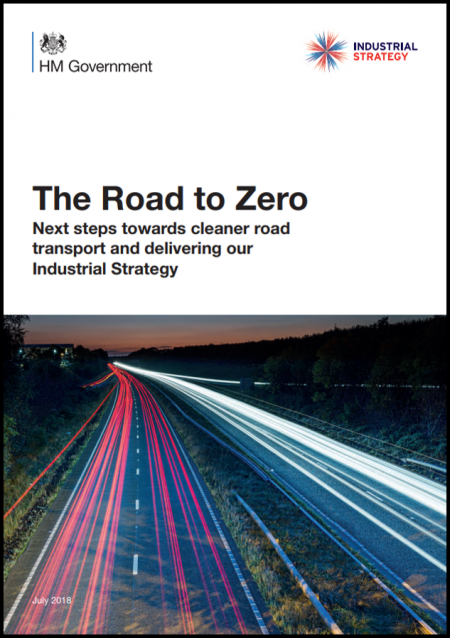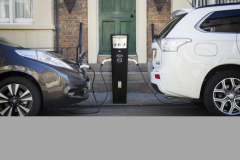The UK Government's 'Road to Zero' strategy for transition to zero emissions for road transport largely relies on replacing petrol and diesel vehicles with low and zero emission electric vehicles (EVs). It has moved its planned date for ending the sale of petrol and diesel vehicles from 2040 to 2030, to support its ambition that by 2050 almost every car and van will be zero emission.
This strategy is driving the development of infrastructure to provide convenient charging points for electric vehicles, and encouraging drivers to move to electric vehicles.
Car manufacturers are responding to the growing interest in electric vehicles by adding EV models to their product range.

What is an electric vehicle?
Electric vehicles use electric motors to drive their wheels. They derive some or all of their power from large, rechargeable batteries. The distance an EV can drive on a full charge is known as its 'range'.
Different categories of electric vehicles include:
- All-electric EVs, where the battery is the only power source.
- Plug-in hybrids (PHEVs) can switch between running on electricity or fossil fuels. They typically have a smaller battery, and therefore a lower battery powered range of between 10-40 miles (15-60 km). However, their maximum range is equivalent to a petrol car. Both plug-in hybrid and all-electric EVs are recharged by plugging them in to the electricity grid.
- Hybrids (HEVs) which do not plug in, such as the Toyota Prius, have a much smaller battery which is recharged while driving. HEVs can drive in electric mode for a few miles.
- Fuel Cell Vehicles generate their own electricity on-board from a fuel such as hydrogen, and do not need to plug in to the electricity grid to recharge. Re-fuelling is similar to a petrol powered car.
Benefits of an electric vehicle
Lower running costs
Although the upfront cost of buying or leasing an EV is often more than their petrol or diesel counterparts, taking into account their whole life costs, EVs often work out cheaper. For example, EVs typically cost £5-6 to charge for a range of 100 miles, whilst an equivalent petrol or diesel car costs £15-£18 to drive 100 miles.
Cleaner and quieter
Plug-in vehicles charging from the UK's National Grid emit considerably less carbon dioxide per mile than petrol or diesel models. Even considering the emissions associated with manufacture, electric cars and vans are less environmentally damaging than their equivalent petrol and diesel models. Driving using electric power does not produce local air pollutants such as nitrogen oxide and particulate matter, which contribute to poor air quality and increase rates of heart and lung disease, cancer and asthma.
Government incentives
The UK government offers grants towards the cost of purchasing new low emission vehicles as well as for electric vehicle charging. Eligibility, and the level of grant varies depending on the type of vehicle. Use the links below to view the latest information on government incentives (links will open in a new window).



